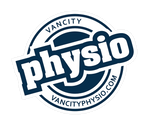Shoulder pain is a common complaint that can stem from various causes, including injuries, overuse, and degenerative conditions. Physiotherapists play a crucial role in diagnosing and treating shoulder pain, helping patients regain mobility and reduce discomfort. In this complete resource, we’ll explore how physiotherapists approach shoulder pain management, the techniques they use, and what you can expect from your treatment.
Understanding Shoulder Pain
Before diving into treatment options, it’s essential to understand the anatomy of the shoulder and the potential causes of pain. The shoulder is a complex joint composed of bones, muscles, tendons, and ligaments. Common conditions that lead to shoulder pain include:
- Rotator Cuff Injuries: Tears or inflammation in the rotator cuff muscles.
- Shoulder Impingement: Compression of the rotator cuff tendons under the shoulder bone.
- Frozen Shoulder: Stiffness and pain due to thickening of the shoulder capsule.
- Bursitis: Inflammation of the bursa, a fluid-filled sac that reduces friction between tissues.
- Shoulder Arthritis: Degeneration of the cartilage in the shoulder joint.
Initial Assessment
When you first visit a physiotherapist for shoulder pain, they will conduct a thorough assessment. This typically includes:
- Medical History: Discussing your symptoms, lifestyle, and any previous injuries.
- Physical Examination: Assessing your shoulder’s range of motion, strength, and any areas of tenderness.
- Functional Tests: Evaluating how the shoulder pain affects your daily activities and movements.
Based on this assessment, the physiotherapist can create a tailored treatment plan.
Treatment Techniques
1. Manual Therapy
Physiotherapists often use hands-on techniques to alleviate pain and improve mobility. This can include:
- Joint Mobilization: Gentle movements to increase the range of motion in the shoulder joint.
- Soft Tissue Techniques: Massage and manipulation of muscles and tendons to reduce tension and promote healing.
2. Exercise Therapy
A significant part of shoulder rehabilitation involves specific exercises designed to strengthen the muscles around the shoulder and improve flexibility. This may include:
- Range of Motion Exercises: Gentle stretches to restore movement.
- Strengthening Exercises: Targeting rotator cuff and shoulder blade muscles to enhance stability.
- Functional Exercises: Movements that mimic daily activities to prepare you for a return to normal function.
3. Shockwave Therapy
Shockwave therapy is an innovative treatment option that physiotherapists may use to manage shoulder pain. This non-invasive technique involves delivering high-energy sound waves to the affected area. Benefits of shockwave therapy include:
- Pain Reduction: Helps alleviate chronic pain by stimulating healing processes in the tissue.
- Enhanced Blood Flow: Promotes circulation, which can accelerate recovery.
- Tissue Regeneration: Stimulates collagen production, aiding in the healing of damaged tissues.
Shockwave therapy can be particularly effective for conditions like rotator cuff injuries and tendinitis.
4. Modalities
Physiotherapists may use various modalities to complement treatment, such as:
- Heat and Cold Therapy: To reduce pain and inflammation.
- Ultrasound: To promote healing through deep tissue warmth.
- Electrical Stimulation: To relieve pain and enhance muscle activation.
5. Education and Ergonomics
Physiotherapists also emphasize the importance of understanding your condition and making lifestyle changes. This can include:
- Posture Education: Training on maintaining good posture to alleviate stress on the shoulder.
- Activity Modifications: Suggestions on how to adjust movements and tasks to prevent further injury.
6. Progress Monitoring
Regular follow-ups are essential to track your progress. Your physiotherapist will adjust your treatment plan as needed, ensuring that you are on the right path to recovery.
What to Expect During Treatment
- Duration: Treatment plans can vary in length, often spanning several weeks to months, depending on the severity of your condition.
- Frequency: You may attend sessions 1-3 times per week, based on your individual needs.
- Home Exercises: Expect to be given exercises to perform at home to reinforce your therapy and promote healing.
Conclusion
Shoulder pain can significantly impact your daily life, but with the right physiotherapy treatment, you can regain your strength and mobility. Physiotherapists use a holistic approach that combines assessment, manual therapy, exercise, shockwave therapy, and education to help you return to your regular activities. If you're experiencing shoulder pain, consider consulting a physiotherapist to explore your options and begin your journey to recovery. Remember, early intervention can lead to better outcomes, so don’t hesitate to seek help!
Contact us today 604-398-5584!


